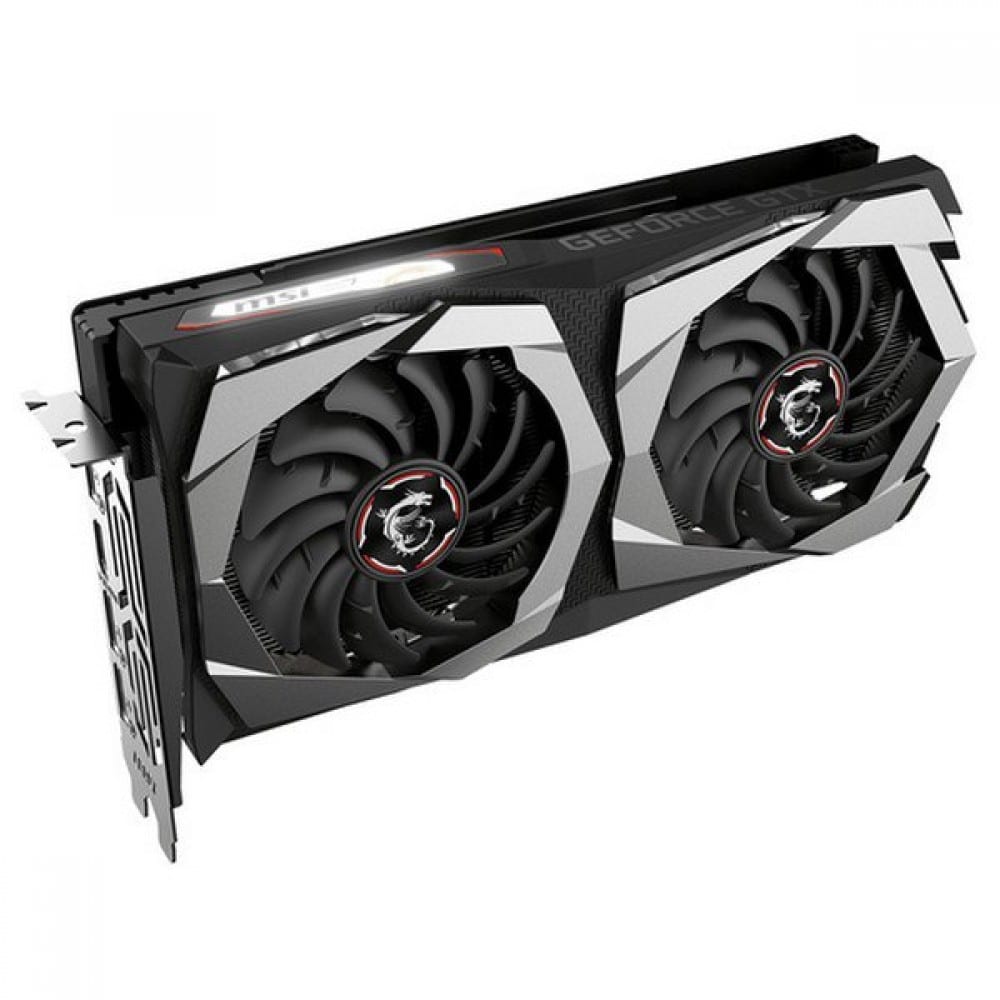The GTX 1650 Super, a beloved graphics card amongst gamers and enthusiasts, has garnered immense popularity for its commendable performance-to-price ratio. With its ability to handle modern games at 1080p resolutions, it has become a go-to choice for budget-conscious gamers seeking an optimal gaming experience.
One intriguing aspect of this graphics card is its memory overclocking potential, often touted as a means to unlock even greater performance gains.
Memory overclocking is a practice that has captured the attention of tech enthusiasts worldwide. By pushing the memory frequency beyond its default settings, users aim to enhance the graphics card’s performance and, in turn, elevate their gaming adventures.
However, amidst the sea of positive experiences, there have been controversial claims circulating about the GTX 1650 Super’s memory overclocking capabilities.
Overview of GTX 1650 Super’s Specifications and Architecture
The GTX 1650 Super, an offering by NVIDIA, is a mid-range graphics card that has garnered immense popularity since its release. Based on the Turing architecture, it is equipped with 1280 CUDA cores and 4GB of GDDR6 memory running on a 128-bit memory bus.
This graphics card fills the gap between entry-level GPUs and higher-end gaming beasts, offering an attractive option for gamers seeking decent performance without breaking the bank.
The use of GDDR6 memory on the GTX 1650 Super represents a significant upgrade compared to its predecessor, the GTX 1650, which featured GDDR5 memory.
This improvement enhances memory bandwidth and overall performance, making it better suited to handle modern games and graphics-intensive applications.
Role of Memory in Graphics Card Performance: Memory plays a crucial role in the overall performance of a graphics card. It serves as a high-speed storage medium for holding data that the GPU needs to render images and process complex visual effects. When you run games or applications, the GPU fetches textures, shaders, and other data from the system memory or VRAM (Video Random Access Memory).
Benefits of Overclocking the GTX 1650 Super:
Overclocking involves increasing the clock speeds of the GPU and memory beyond their stock settings. While the GTX 1650 Super is not designed as a flagship overclocking card, there are still tangible benefits to be gained from memory overclocking:
- Increased Frame Rates: Memory overclocking can boost the bandwidth and data transfer rate, leading to quicker loading times and reduced data bottlenecks. This often translates into higher frame rates, resulting in a smoother and more enjoyable gaming experience.
- Improved Performance in Graphics-Intensive Tasks: Graphics-intensive applications, like video editing and 3D rendering, can benefit from memory overclocking as it allows for faster data processing and rendering times.
- Enhanced Texture Quality: Overclocking the memory can help deliver higher texture resolutions in games, resulting in more detailed and visually appealing graphics.
- Flexibility in Graphics Settings: With memory overclocking, you may have more headroom to push graphical settings to higher levels without sacrificing performance, allowing you to enjoy better visual fidelity in games.
Memory Overclocking Techniques
Memory overclocking can be a rewarding way to boost the performance of your GTX 1650 Super graphics card. However, it requires careful consideration and proper execution to ensure stability and avoid potential damage. Follow this step-by-step guide to safely overclock the memory of your GTX 1650 Super:
Step 1: Prepare Your System:
- Ensure that your PC’s power supply can handle any increased power demands from overclocking.
- Make sure your GTX 1650 Super has adequate cooling, either through stock fans or aftermarket solutions. Proper cooling is crucial for stable overclocking.
Step 2: Install and Update GPU Drivers:
- Before proceeding, ensure you have the latest drivers for your GTX 1650 Super installed. Visit NVIDIA’s official website to download and install the latest drivers.
Step 3: Download Overclocking Software:
- Download and install a reliable overclocking utility. MSI Afterburner and EVGA Precision X1 are popular choices and offer user-friendly interfaces for GPU overclocking.
Step 4: Monitor Temps and Performance:
- Launch the overclocking software and monitor both the temperature and performance of your graphics card. Keep an eye on temperatures during the overclocking process to avoid overheating.
Step 5: Increase Memory Clock in Increments:
- Start by increasing the memory clock in small increments, such as 50 MHz at a time.
- Apply the new settings and run a benchmark or play a demanding game to check for stability. If everything runs smoothly, proceed to the next increment.
Step 6: Stability Testing:
- Use stress-testing applications, such as FurMark or Heaven Benchmark, to check the stability of your overclocked settings.
- Run these tests for an extended period to ensure that your GTX 1650 Super can handle the overclock under heavy loads.
Step 7: Observe Artifacts and Stability:
- Watch out for any graphical artifacts, flickering, or system crashes during stress testing. If you encounter these issues, it might indicate an unstable overclock.
- If instability occurs, lower the memory clock speed to the previous stable value.
Step 8: Record and Compare Results:
- Throughout the overclocking process, keep track of the memory clock speeds and performance gains achieved.
- Compare the benchmark results with the stock settings to evaluate the impact of your memory overclock.
Step 9: Temperature Check:
- After completing the overclock, recheck your graphics card’s temperatures during heavy gaming or stress tests.
- Ensure that the temperatures stay within safe limits to avoid thermal throttling or hardware damage.
Step 10: Save Your Settings:
- Once you find a stable memory overclock, save the settings as a profile in your overclocking software. This allows you to easily switch between overclocked and stock settings as needed.
Performance Gains
Performance Gains Achieved Through Memory Overclocking:
Memory overclocking can lead to significant performance gains in various scenarios, enhancing the overall gaming and computing experience with the GTX 1650 Super. The primary performance benefits of memory overclocking include:
- Increased Frame Rates: By overclocking the memory, the GTX 1650 Super can load and transfer data more quickly, resulting in improved frame rates in games. Gamers may observe smoother gameplay, reduced stuttering, and enhanced responsiveness.
- Higher Texture Quality: Overclocking the memory allows the graphics card to load higher-resolution textures, enhancing the visual fidelity and realism of in-game graphics. This improvement is particularly noticeable in games that rely heavily on detailed textures.
- Improved Rendering Speeds: Memory overclocking can accelerate rendering times in graphics-intensive applications, such as 3D rendering, video editing, and content creation. This leads to faster processing of complex visual effects and quicker completion of tasks.
- Multi-Tasking Efficiency: With a higher memory clock, the GTX 1650 Super can handle multiple tasks and applications more efficiently, making it an excellent choice for users who engage in both gaming and productivity tasks.
Potential Trade-offs of Memory Overclocking:
While memory overclocking can yield performance gains, it also comes with potential trade-offs that users should be aware of:
- Increased Power Consumption: Overclocking generally requires higher voltage settings, which can result in increased power consumption by the graphics card. This could lead to higher electricity bills and put additional strain on your power supply unit.
- Elevated Heat Output: As the memory runs at higher clock speeds, it generates more heat. Over time, this increased heat output can negatively impact the longevity of your graphics card and other components if not managed properly.
- Stability and System Crashes: Aggressive memory overclocks without adequate stability testing can lead to system crashes, freezes, or even data corruption. Ensuring stability is vital to avoid any detrimental consequences.
- Reduced Lifespan: Operating the GTX 1650 Super at higher memory clock speeds for prolonged periods might lead to accelerated wear and tear on the components, potentially reducing the overall lifespan of the graphics card.
Importance of Adequate Cooling Solutions
Having appropriate cooling solutions is critical when overclocking the memory of the GTX 1650 Super. The increased heat generated during overclocking can cause thermal throttling, resulting in reduced performance and stability issues.
To counter this, users should consider the following cooling options:
- High-Quality Aftermarket GPU Cooler: Upgrading to an aftermarket GPU cooler with larger heatsinks and better fans can help dissipate the increased heat more efficiently.
- Case Fans and Airflow: Ensuring sufficient airflow inside the PC case is vital. Positioning case fans strategically and maintaining proper cable management can help keep temperatures in check.
- Water Cooling Solutions: Enthusiasts might opt for liquid cooling solutions, such as all-in-one (AIO) liquid coolers, to efficiently manage the GPU’s temperature during overclocking.





